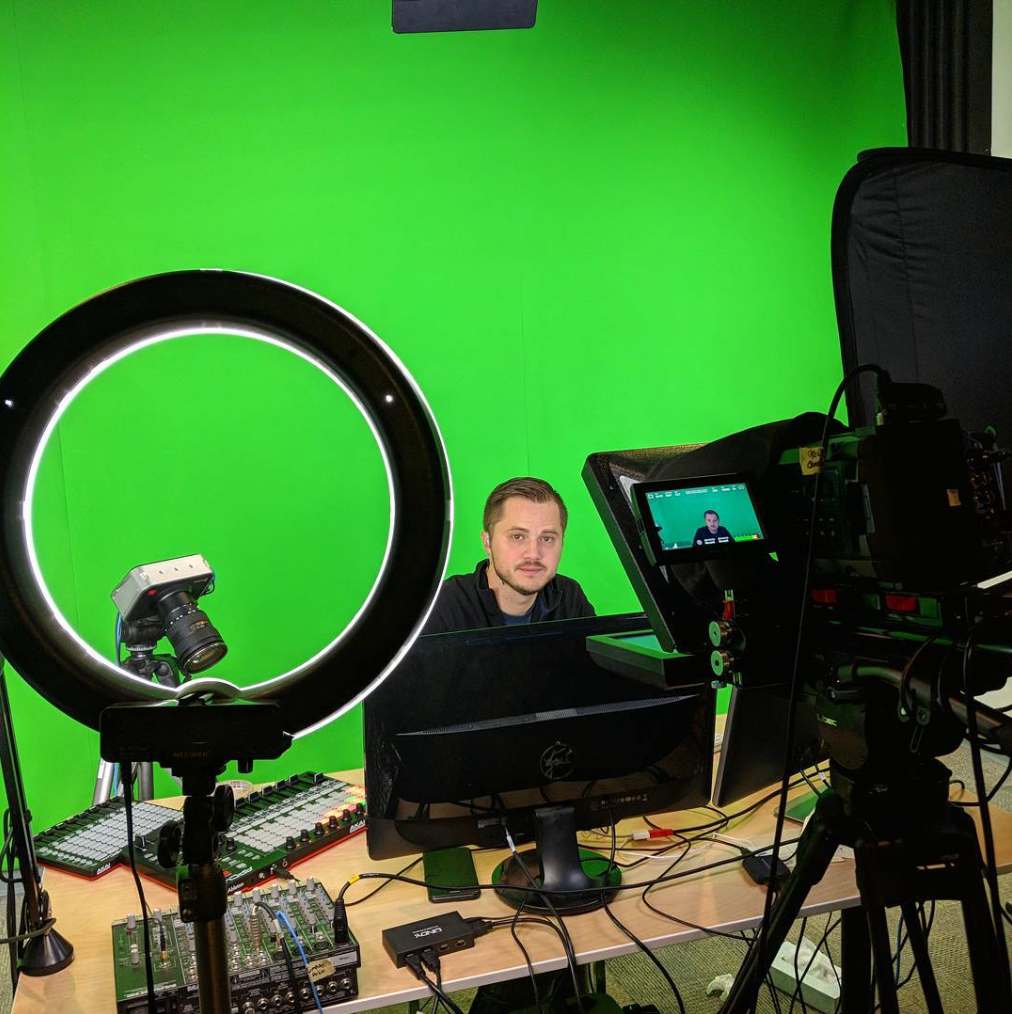Working with Green Screens – Ideal World vs. Real World
By Jim Bask
From Telestream
 We’ve been using green screens and chroma key filters in our WirecastLive and ScreenFlowLive shows as well as our webinars for a number of years now. During this time, we’ve learned a lot… but that’s not to say we don’t still have much to learn. One of the most important things we’ve learned over the years is that there are two worlds when it comes to live green screen work. The ideal world and the real world. Unfortunately for us, these worlds don’t always see eye-to-eye. If you’re like most people or organizations (low budget or just learning this for the first time), you will find yourself more often than not working in the real world. In an effort to take some of the guesswork out for you, we are sharing our top green screen tips (most of which we’ve learned through trial and error in our own studio), conveniently organized in order of reality.
We’ve been using green screens and chroma key filters in our WirecastLive and ScreenFlowLive shows as well as our webinars for a number of years now. During this time, we’ve learned a lot… but that’s not to say we don’t still have much to learn. One of the most important things we’ve learned over the years is that there are two worlds when it comes to live green screen work. The ideal world and the real world. Unfortunately for us, these worlds don’t always see eye-to-eye. If you’re like most people or organizations (low budget or just learning this for the first time), you will find yourself more often than not working in the real world. In an effort to take some of the guesswork out for you, we are sharing our top green screen tips (most of which we’ve learned through trial and error in our own studio), conveniently organized in order of reality.
Ideal World:
- Spend the time and money to set up a pro green screen studio where you have enough room to shoot head to toe with green all around you to allow for wide shots, mediums and close-ups
- Walls that aren’t green should be matte black and sound proofed to absorb light/minimize reflection and noise
- Use a separate lighting rig just for your green screen to even out lighting, reduce shadows, and allow brightly lit but not blown out shots
- Subject should stand 10-20 feet in front of the green screen to minimize bounce and splash
- Light the foreground subject separately, match your lighting to your virtual set/background and make sure you light your subject’s head and shoulders properly to remove fuzzy edges and green spill
- Hair is the trickiest thing to chroma key – spend time lighting it properly
- Add blurs and filters to your backdrops and virtual sets to mimic focal lengths
- Use moving backgrounds not static ones when possible/appropriate, even a small amount of motion can give “life” to a fake background
- Ad props and real-world effects to match backgrounds as appropriate
- Spend time testing ahead of time – different skin tones, clothing and props will key differently, and you will need to fine tune as you go (there is no 1-size fits all)

